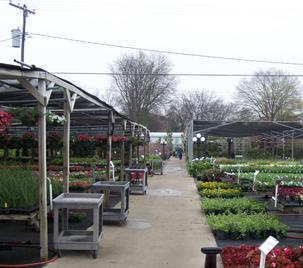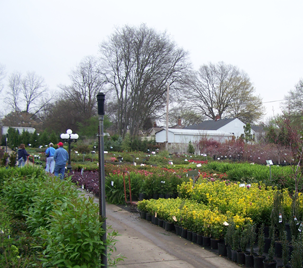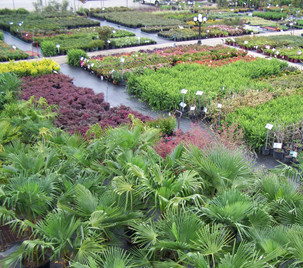CARING FOR NEWLY PLANTED SHRUBS AND TREES
Never put fertilizer in the hole with your new shrub or tree, this is dangerous because it
can harm the root system. Always apply the fertilizer on top of the plants root system and
cover with mulch so that it does not get washed away. Always use a slow release
fertilizer made for your particular plant, we can help you with the right kind. Never use a
quick release fertilizer such as 13-13-13 that you would use on your garden or lawn.
Most newly planted shrubs and trees will not need fertilizing the first season
anyway.
Never break up the root system of a newly planted shrub or tree this can cause shock to
the plant and kill it. Azaleas and rhododendron’s are an exception to this, on these plants
stick a knife in a quarter inch and make 4 vertical cuts straight down the root zone.
Never plant a shrub or tree below the level it is already growing in the pot or ball and
burlap. Burying a plant to deeply will kill it. Always make sure the dirt in the pot is even
with the surrounding soil or raised 1 inch. It is especially important to raise camelias,
boxwoods, azaleas and rhododendrons 1 inch. Dig hole 1 and a half times as wide as the
root ball and no deeper. Use mulch around the top of plants to conserve moisture and to
insulate the roots from weather extremes. Don’t weed eat around the trunk of a tree,
hitting the trunk with a weed eater string can kill it.
Balled and burlap plants: plant to appropriate depth as described above. B & B trees
are sometimes very big and heavy be sure to ease the plant off the truck, don’t drop it as
this could cause damage by loosening the trunk from the root system. Also, don’t drag it
around by the trunk. Once in the hole cut all string from around the trunk and peel the
burlap back away from the trunk of the plant cutting off the excess, don’t remove the
burlap from the bottom. It will rot very quickly once it is covered with soil, if you try to
remove all the burlap this can result in loosening of the root ball and it could increase the
chance of plant loss, the dirt needs to stay compacted around the root ball of the plant. If
the ball was supported by a wire basket, use wire cutters and remove as much of the wire
as practical once the tree is in place in the hole. Do not pull at basket or remove bottom
of basket this may disrupt the root system. Either leave it on or cut it off carefully as
described above. Do not put a pipe down beside your tree for watering purposes, it is
better to water by hand from the top down, so the entire root system will get water.
Soil amendments If you are doing a large bed of shrubs you can put 2-3” of organic
matter such as: pine bark or peat moss on the surface and work it in to a depth of 8-10”.
If you are digging individual holes for each plant no soil amendments are recommended.
In the last two decades a great deal of research has been done to determine if soil
amendments are needed when planting new shrubs and trees. There is still a lot of
disagreement over this by some, but researchers in Oklahoma and Georgia have
concluded that their is no benefit to adding soil amendments to a new planting on most
shrubs and trees. Most shrubs and trees will do better if the native soil is put back in
around the plant. Notable exceptions to this are camellia, rhododendron, and azalea. Ask
us if you are unsure whether or not you need soil amendments for your particular plant.





